What is ChatGPT?
OpenAI's ChatGPT, or Chat Generative Pre-Trained Transformer, is a sophisticated language model. It is an advanced AI chatbot that engages in humanlike conversations and generates diverse forms of written content, such as articles, code, and emails. It utilizes natural language processing to understand and respond to queries, providing an interactive and versatile experience.
It employs a transformer-based design that has revolutionized Natural Language Processing (NLP). ChatGPT has learned to read and create human-like text after being trained on a large quantity of heterogeneous text data.
ChatGPT enables computers to engage in more natural and intuitive conversations by utilizing complex algorithms and neural networks. It can understand linguistic details and contextual clues and construct coherent replies that simulate human speech.
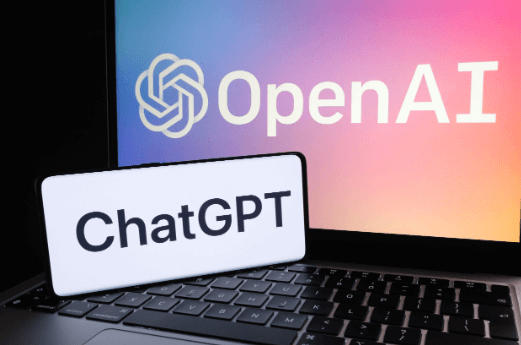
ChatGPT is a significant advancement in Conversational AI, paving the way for more natural interactions between Humans and Machines. Its language understanding and creation abilities have the potential to revolutionize the future of communication and promote innovation in a variety of fields.
Inventors behind ChatGPT
OpenAI's dedicated team of academics and engineers deserves credit for creating ChatGPT, the cutting-edge conversational AI platform. OpenAI is a world-renowned Artificial Intelligence Research Centre noted for its breakthrough AI work.
A large team of specialists has to work together to build ChatGPT. These professionals tested conversational bots powered by AI by applying their knowledge of machine learning, natural language processing, and deep learning.
The main team behind ChatGPT consisted of accomplished researchers, engineers, and Data Scientists who contributed their unique perspectives and skills to the creation of the system. The development of cutting-edge AI models and their unwavering dedication to innovation has been crucial to ChatGPT's success.
OpenAI team, led by visionary leaders, combined their aggregate experience with cutting-edge research to create a model capable of interpreting and producing human-like language. They spent many hours training ChatGPT on massive quantities of data to ensure it was exposed to a diverse set of topics and linguistic patterns.
Furthermore, the ChatGPT creators emphasized the need for continued research and cooperation. They aggressively solicited user and AI community feedback to develop the model and overcome its shortcomings. This iterative technique enabled them to continually develop and improve ChatGPT's capabilities.
Understanding ChatGPT's Operation
ChatGPT is based on a transformer-based architecture known as the Generative Pre-trained Transformer (GPT). This architecture has revolutionized Natural Language Processing (NLP) by enabling models to understand and produce text with unprecedented accuracy and contextual awareness.
The functioning of ChatGPT is divided into three primary steps: Pre-training, Fine-tuning, and Inference.

- Pre-training: ChatGPT is exposed to a lot of text data from the internet during the pre-training phase. It gains an understanding of grammar, context, and semantic linkages as it develops the ability to predict the next word in a sentence. The model builds internal representations of words, phrases, and concepts throughout the unsupervised learning process.
- Fine-tuning: The model is fine-tuned after pre-training to adapt to specific activities and increase performance. During this step, ChatGPT is trained on more precise and carefully curated datasets, including demonstrations of right conduct and comparisons to grade different responses. Fine-tuning helps the model to better match its language comprehension to specific stimuli and maximize its responses.
- Inference: ChatGPT is ready for inference after pre-training and fine-tuning, which is when it generates responses based on user requests. When a user enters a message or a query, the model uses previously learned information and contextual understanding to respond in a coherent and logical manner. It creates human-like text by employing the patterns, connections, and representations that it learned during training.
Note: ChatGPT operates based on statistical patterns and probabilities rather than true understanding. While the model can generate impressive responses, it may sometimes produce incorrect or nonsensical outputs.
Technology behind ChatGPT
ChatGPT technology is built on a transformer-based architecture known as the Generative Pre-trained Transformer (GPT). This architecture has transformed Natural Language Processing (NLP), allowing ChatGPT to interpret and create text in a more sophisticated manner.
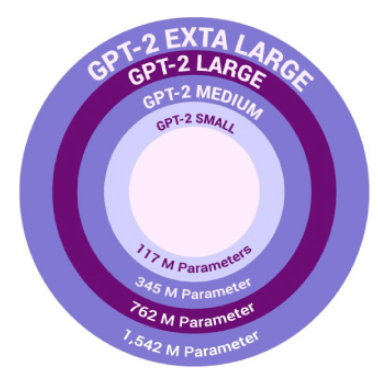
Computer systems that imitate the human brain are known as Neural Networks. They are made up of layers of connected artificial neurons that work together to examine and interpret data. In the case of ChatGPT, these neural networks are specifically designed for text analysis and creation.
The transformer architecture on which ChatGPT is based is particularly effective for language processing and generation. It employs attention techniques to assist the model in focusing on various areas of the input text and understanding the links between words and sentences. ChatGPT can now understand the context and meaning of statements.
A large amount of text data, such as books, papers, and webpages, is utilized for training ChatGPT. From this data, the model learns patterns, grammatical rules, and relationships between words and concepts. ChatGPT may use this training to build a solid foundation of knowledge and language understanding.
Fine-tuning is also a part of the technology, in which the model is trained on more particular and focused datasets. This procedure assists in aligning the model's comprehension with particular cues and objectives. It entails training the model with instances of right behavior and comparing different replies to score them.
ChatGPT may provide replies that are logical, contextually appropriate, and similar to how a human would reply by using these technologies.
Note: ChatGPT does not comprehend text in the same way that humans do. It generates answers based on statistical patterns and relationships learned during training.
What can Users Ask ChatGPT?
Users can interact with ChatGPT by asking a variety of basic and complicated inquiries. ChatGPT can provide answers to questions regarding the purpose of existence or historical knowledge, such as the year New York became a state. ChatGPT also indicates skill in STEM areas, making it useful for jobs like debugging code or creating code snippets.
While users are allowed to ask whatever topic they want, it's crucial to emphasize that ChatGPT's expertise is based on data accessible till 2021. As a result, it is deficient in information on events and facts that happened after that year. Furthermore, as a conversational chatbot, users have the flexibility to seek additional details or request the system to try generating text again if the initial response doesn't meet their requirements.
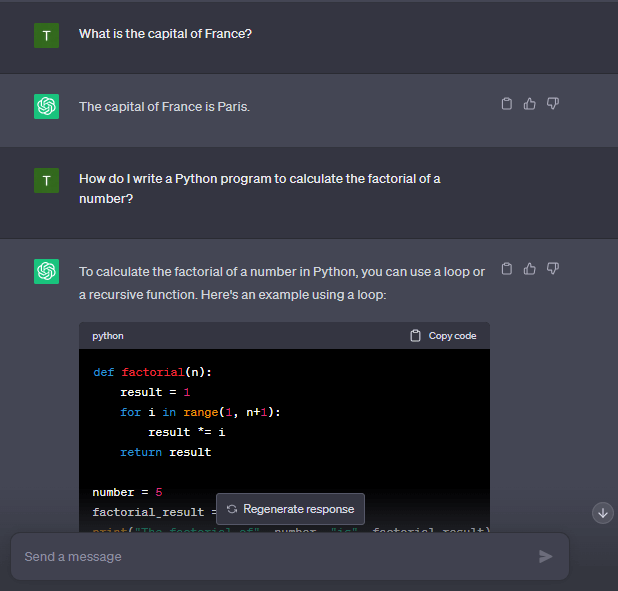
Advantages of ChatGPT
In this session, we will discuss various advantages of ChatGPT and how they are helpful for users in today's world.
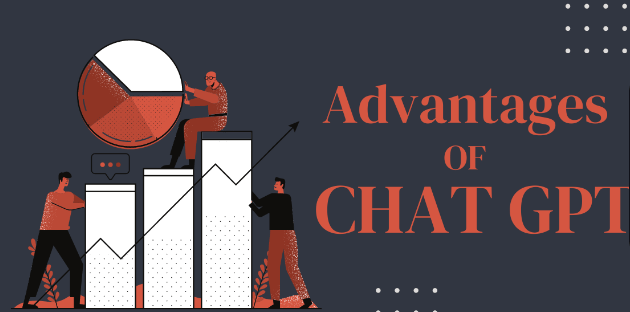
- Natural Language Understanding: ChatGPT has a remarkable capacity to understand and create text that is similar to that of humans. It understands user cues, questions, and remarks, enabling more natural and conversational interactions.
- More Engaging Dialogues: The capacity of ChatGPT to create coherent and contextually appropriate replies allows for more engaging dialogues with users. It may replicate human-like communication, making the user experience more dynamic and personalized.
- Versatility: ChatGPT is a versatile tool that may be used in a variety of sectors. It may help with customer service, content development, virtual assistance, education, and other tasks. Its wide range of uses makes it a significant tool in a variety of sectors.
- Knowledge Access: ChatGPT has been trained on massive volumes of text data, giving it access to a tremendous quantity of information. It can respond to inquiries instantly, provide explanations, and access relevant knowledge on a variety of topics.
- Time and cost efficiency: ChatGPT increases productivity and saves time by automating some operations and offering quick replies. It may help with content creation, code recommendations, customer support, and a variety of decision-making procedures.
- Inspiration and Creativity: ChatGPT is a creative tool for authors, artists, and inventors. It can inspire and facilitate the creative process by generating ideas, providing writing prompts, providing different views, and assisting in the resolution of creative barriers.
- Academic Assistance: ChatGPT can serve as a virtual tutor or learning buddy. It can explain complicated topics, answer questions, and give personalized coaching, so improving educational experiences and encouraging self-paced learning.
- Scalability: Because ChatGPT can support several concurrent chats, it can scale to accommodate a large number of users. This scalability makes it suited for high-user-demand applications such as customer support systems or instructional platforms.
Ethical Concerns Surrounding ChatGPT
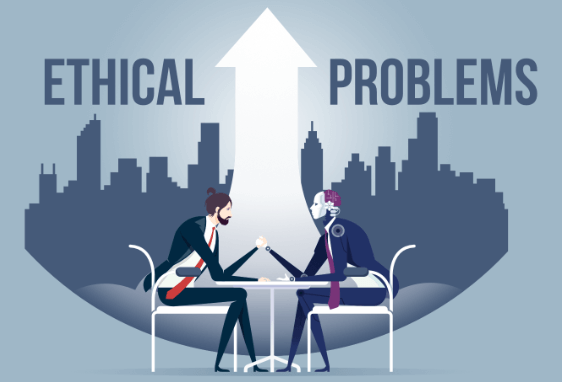
- Bias in Training Data: Biases in the data used to train ChatGPT may be reflected in its replies. If there are biases in the training data, such as gender or racial prejudices, the model may unintentionally reproduce them. Furthermore, ChatGPT is unable of understanding abusive or discriminating language, which might result in improper or biased output. To reduce these biases and provide more accurate and fair outcomes, it is critical to analyse different perspectives of the training data.
- Plagiarism and Deceitful Use: The human-like capabilities of ChatGPT raise concerns about academic integrity. Students could misuse the model to cheat, plagiarize, or generate misleading content. Educators face the challenge of detecting and preventing such unethical behaviour. OpenAI has taken steps to address this issue by implementing AI text classifiers and watermarks to differentiate between AI-generated and human-generated content, aiming to uphold academic standards and discourage dishonest practices.
- Job Displacement and Impact on Human Interaction: The advancement of ChatGPT and similar technologies raises concerns about job displacement. As tasks like data entry, customer service, and translation become automated, there is a potential impact on employment opportunities for humans. However, it is important to view AI as a tool that can augment human capabilities rather than entirely replace jobs. By utilizing ChatGPT as a supportive tool, professionals can focus on higher-level tasks, leading to the creation of new job opportunities and the need for upskilling in complementary areas.
- Privacy Concerns: ChatGPT's text-based nature can pose privacy risks. As users interact with the model, sensitive information can be disclosed, and the model can track and profile individuals based on their input. OpenAI retains this information indefinitely, raising concerns about data security and privacy protection. Robust measures need to be implemented to safeguard personal data, ensure transparency in data usage, and establish user control over their information.
Limitations of ChatGPT:
While ChatGPT is a powerful AI language model, it does have certain limitations. A few of them have been discussed below:
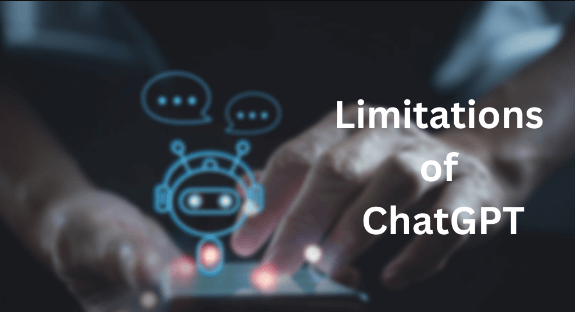
- Lack of Real-world Understanding: Despite its outstanding capabilities, ChatGPT lacks actual text understanding. Rather than possessing actual knowledge, it functions by recognizing patterns and relationships in training data. As a result, while it may create logical replies, it is incapable of genuinely comprehending the context or underlying meaning of the material it analyses.
- Sensitivity to Input Phrasing: ChatGPT's replies might vary dramatically depending on minor changes in prompt phrasing. Even modest changes in the phrasing of a question might result in different results. This sensitivity might result in inconsistent or erroneous returns. Thus, users must carefully phrase their searches to acquire the desired results.
- Tendency to Provide Cohesive but Incorrect Answers: ChatGPT is built to provide replies that seem cohesive and believable. However, it may prioritize providing a correct response over maintaining factual correctness. This implies that it may occasionally produce responses that appear sensible but are factually erroneous, requiring users to independently check the facts.
- Limited Contextual Understanding: While ChatGPT can take into account some context from prior messages in a conversation, it only has a limited recollection of the current discussion. As a result, there may be lapses in context and replies that are not exactly aligned with the dialogue. To guarantee clear and accurate communication, users may need to offer extra context or repeat information.
- Inappropriate or Disrespectful Outputs: Because of its training on various internet data, ChatGPT might provide inappropriate, disrespectful, or damaging replies. Although OpenAI has added safety safeguards to prevent such outputs, it is still possible to encounter undesirable replies. Users should use caution and submit comments to assist the system's safety measures improve.
- No Real-Time Responses: ChatGPT does not offer real-time responses. Interacting with the model necessitates an internet connection and involves sending prompts to a server for processing. This can cause delay and is not recommended for applications that require quick or time-sensitive replies.
- No External URL Support: ChatGPT does not support accessing or providing information from external websites or URLs. It is unable to access the internet or obtain real-time data from online sources. All replies are created using the information gained during model training.
- Lack of Location-Based Capability: ChatGPT presently lacks the capacity to incorporate location-based data into its answers. It cannot make location-specific recommendations or deliver personalized replies depending on the user's geographical location. This constraint limits its utility in applications that require location-based data.
- Limitations in Answering Basic Riddles: While ChatGPT has excellent language production skills, it has occasionally struggled to answer basic riddles or puzzles correctly. This shows the model's potential limits in some sorts of situations that need extensive logical reasoning or domain expertise.
Applications of ChatGPT
There are various applications that can be developed using ChatGPT, some of which have been given below:
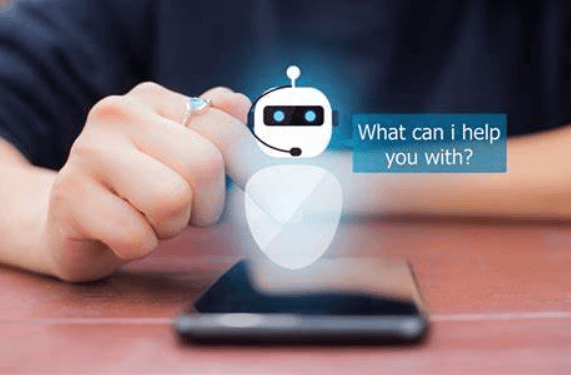
- Customer Service: ChatGPT is used in customer assistance systems to deliver quick and accurate replies to consumer inquiries. It may help with typical questions, resolving difficulties, and directing users via self-service alternatives, improving customer experiences and decreasing support team burden.
- Content Creation: Writers, journalists, and content creators utilize ChatGPT to help them create content. It can aid with brainstorming ideas, providing writing prompts, recommending relevant material, and increasing the overall quality of written content by presenting alternate sentence patterns or language options.
- Virtual Assistants: ChatGPT is a platform for virtual assistant apps. Users may participate in natural language chats with virtual assistants using ChatGPT to do activities such as creating reminders, arranging appointments, answering general knowledge queries, and making personalized suggestions.
- Personal Productivity: People utilize ChatGPT to improve their personal productivity. It may assist in organizing schedules, defining objectives, recommending time management practices, and sending reminders to increase efficiency and job completion.
- Storytelling and Creative Writing: Authors and creative writers use ChatGPT to generate tale ideas, character development, and overcome writer's block. Writers may explore numerous story possibilities and find inspiration for their creative endeavours by participating in interactive chats using ChatGPT.
- Educational Applications: To provide personalized tutoring experiences, ChatGPT is linked to educational platforms. It may explain things, answer questions, and walk students through different subjects, establishing dynamic and interesting learning environments.
- ChatGPT as a Social Companion: Some people use ChatGPT as a social companion to participate in discussions, share ideas, or get emotional support. While technology cannot replace human connection, it can give companionship when human interaction is restricted.
- Code Assistance: ChatGPT can assist developers by providing code suggestions, offering syntax corrections, and helping with debugging. Developers can interact with ChatGPT to seek guidance on specific coding challenges, explore different approaches, and receive recommendations for code optimization.
Future of ChatGPT
The future of ChatGPT holds immense potential for advancements and innovations in the field of conversational AI. Here are some key aspects that depict the future direction of ChatGPT:
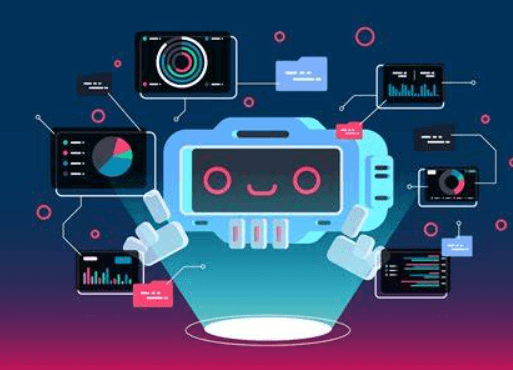
- Enhanced Understanding: Future iterations of ChatGPT are expected to exhibit improved language comprehension and context awareness. Through continued research and development, ChatGPT is likely to understand user intents more accurately, leading to more meaningful and relevant responses.
- Reduced Biases: Efforts to mitigate biases in AI systems are ongoing, and the future of ChatGPT involves refining the training processes and data sources to reduce biases in its responses. OpenAI aims to ensure that ChatGPT provides fair and unbiased information to users.
- Domain-Specific Expertise: ChatGPT could be trained in specific domains to provide specialized knowledge and support. For instance, it could assist medical professionals with accurate and up-to-date information or offer tailored advice in areas such as finance, law, or technology.
- Ethical and Responsible AI: As AI technology progresses, there will be an increased focus on ensuring the ethical use of ChatGPT. This involves addressing issues such as privacy, security, transparency, and accountability to build trust and maintain user confidence.
Conclusion
In conclusion, ChatGPT is an exciting technology that brings us closer to natural and engaging conversations with machines. It has the advantages of understanding human language, being versatile in different domains, and providing access to a wealth of knowledge. However, there are limitations, like its lack of real understanding, sensitivity to phrasing, and potential biases. The future of ChatGPT holds promise with improved comprehension, reduced biases, personalized interactions, and enhanced multimodal capabilities. As we move forward, it is important to use ChatGPT responsibly and ethically, ensuring that it enhances our lives while addressing its limitations.
|









 For Videos Join Our Youtube Channel: Join Now
For Videos Join Our Youtube Channel: Join Now









